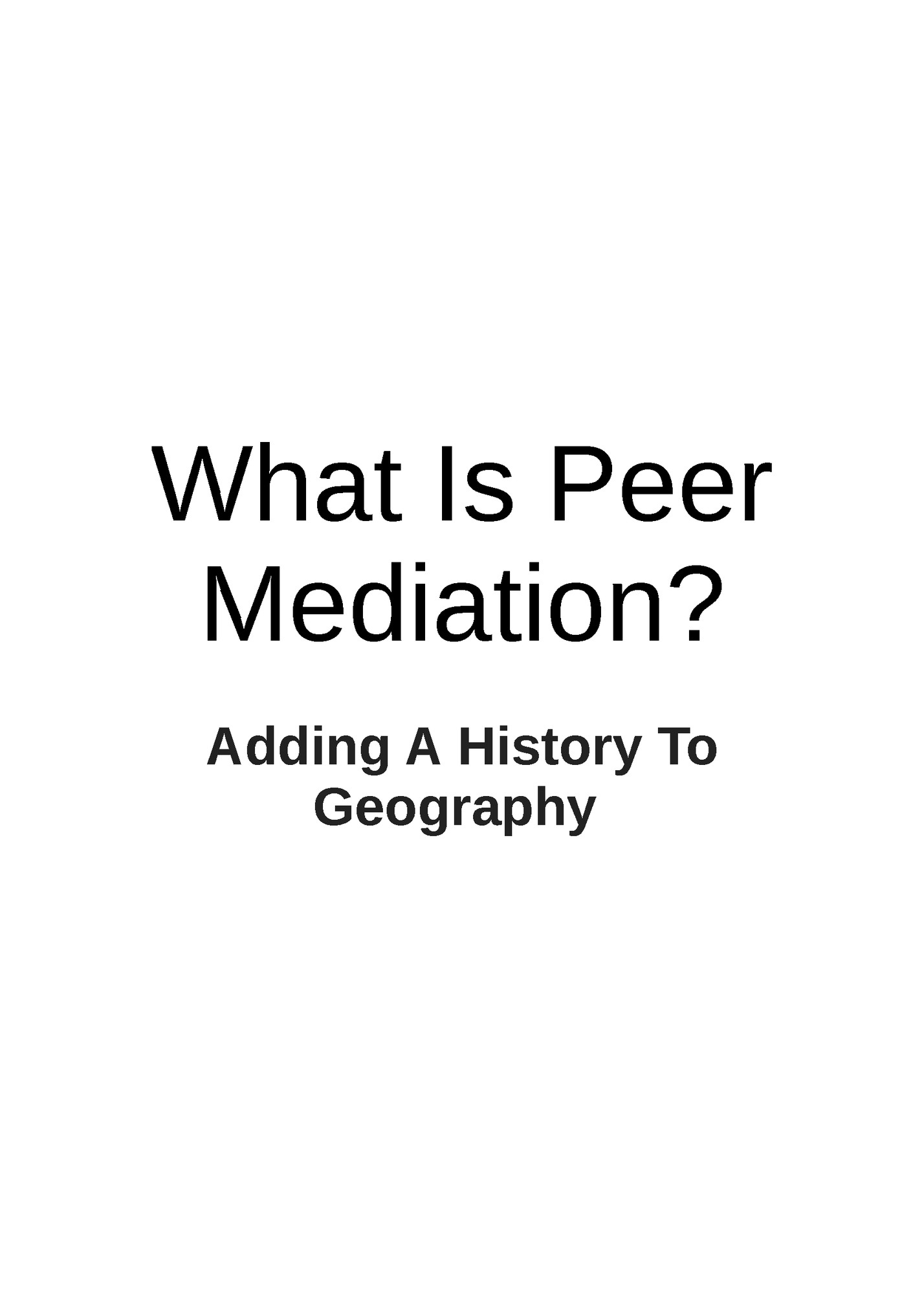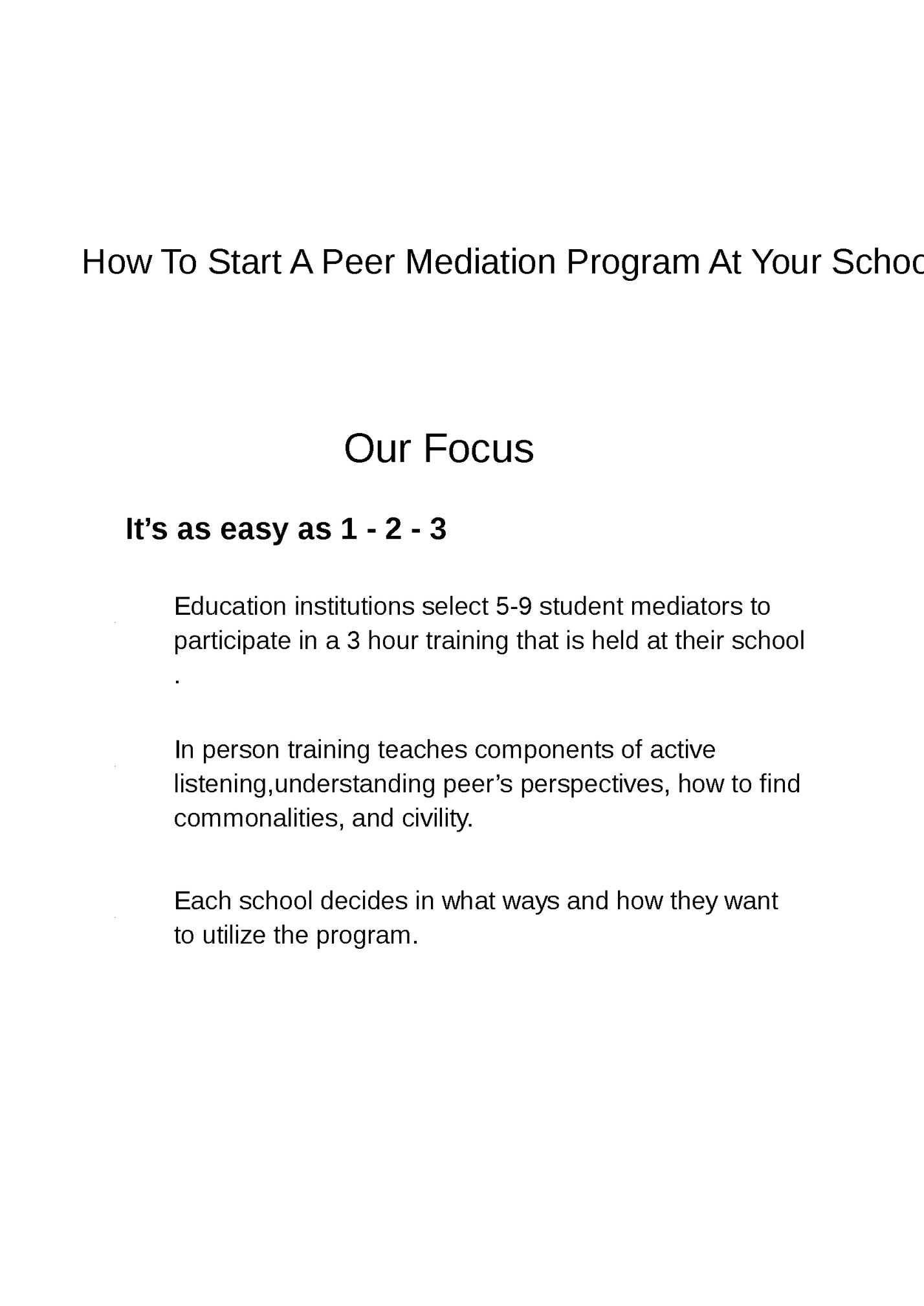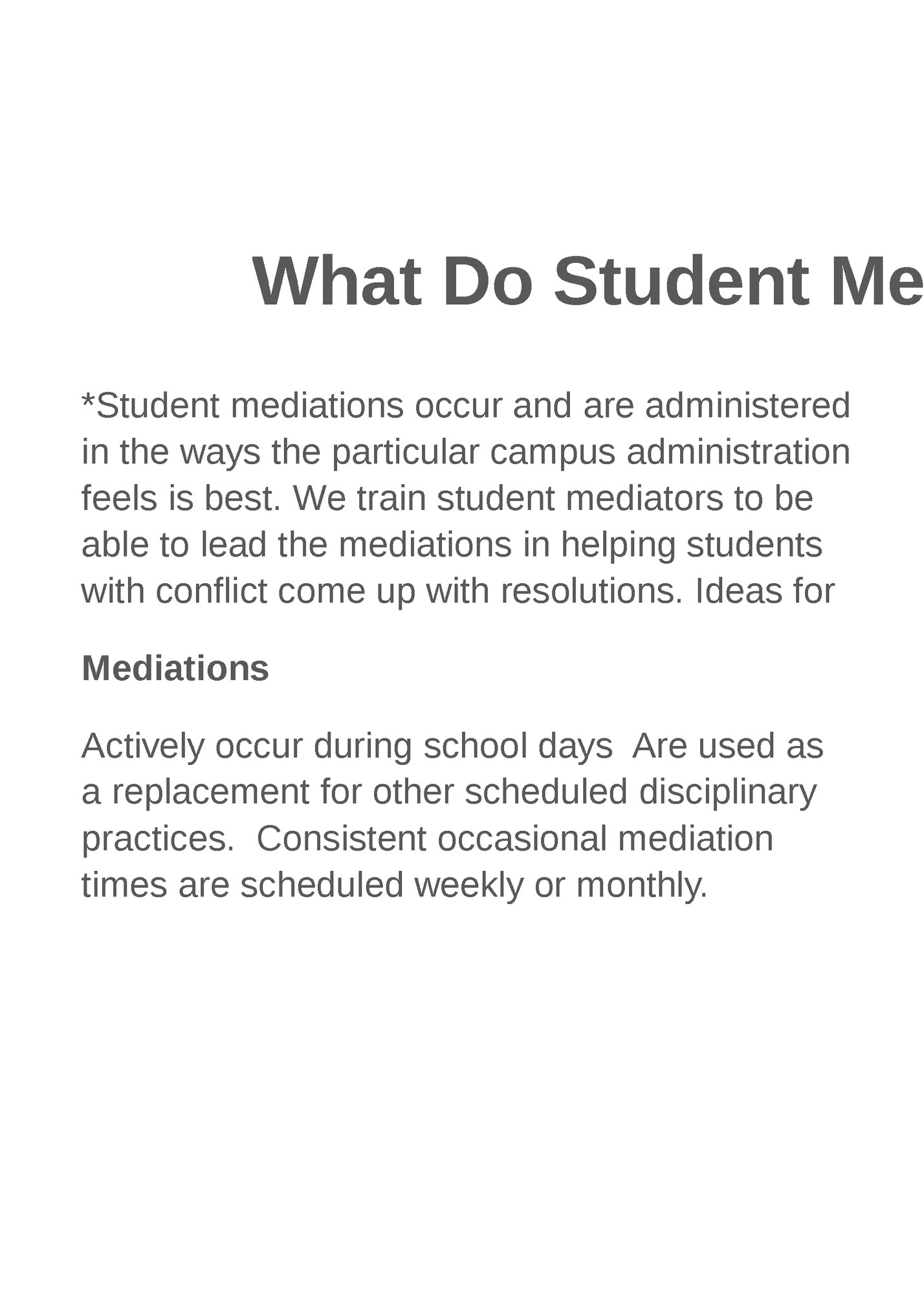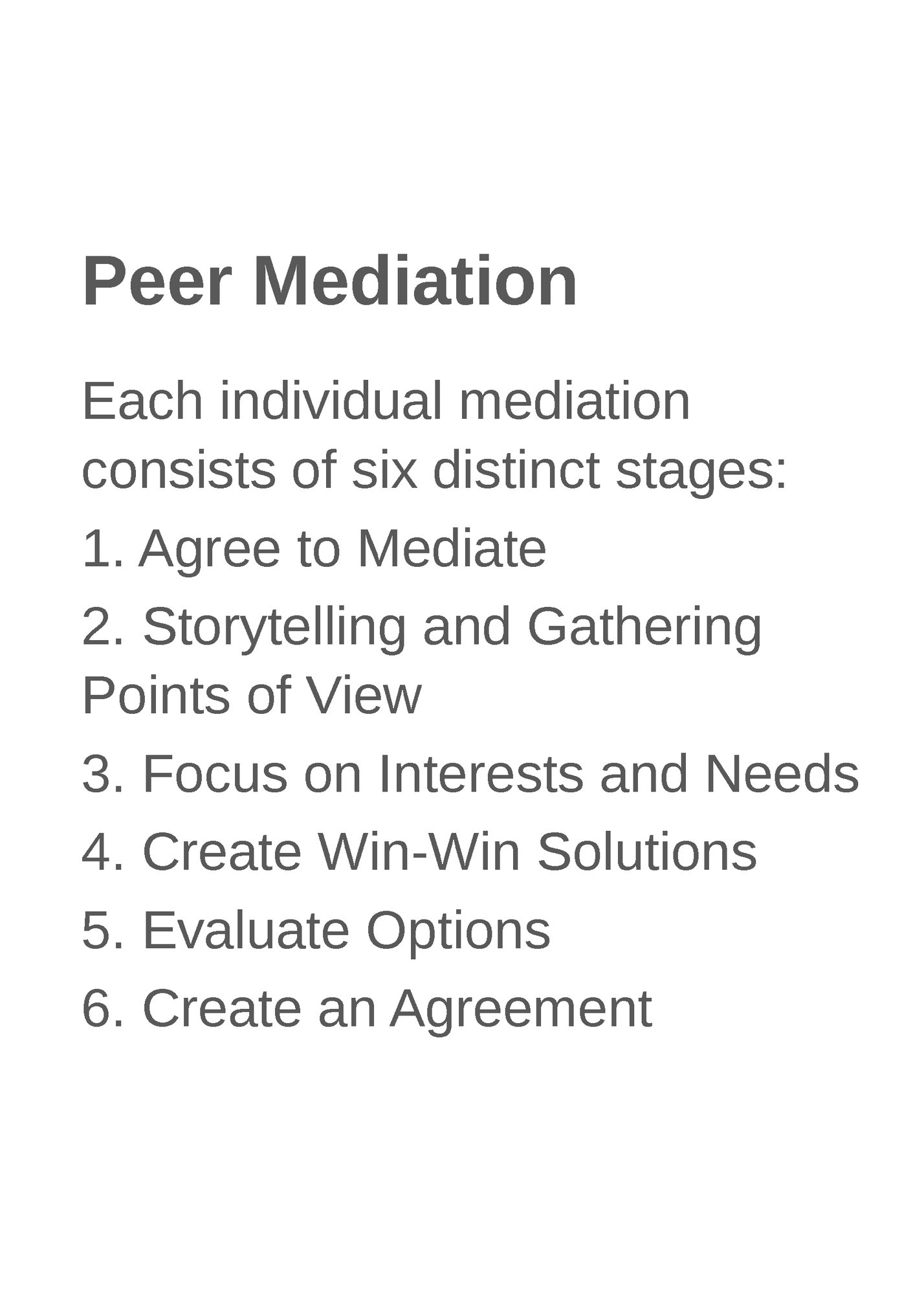Mediation? Adding A History To Geography


Our Focus It’s as easy as 1 - 2 - 3 Education institutions select 5-9 student mediators to participate in a 3 hour training that is held at their school . In person training teaches components of active listening,understanding peer’s perspectives, how to find commonalities, and civility. Each school decides in what ways and how they want to utilize the program.

*Student mediations occur and are administered in the ways the particular campus administration feels is best. We train student mediators to be able to lead the mediations in helping students with conflict come up with resolutions. Ideas for Mediations Actively occur during school days Are used as a replacement for other scheduled disciplinary practices. Consistent occasional mediation times are scheduled weekly or monthly.

Each individual mediation consists of six distinct stages: 1. Agree to Mediate 2. Storytelling and Gathering Points of View 3. Focus on Interests and Needs 4. Create Win-Win Solutions 5. Evaluate Options 6. Create an Agreement The introduction of peer mediation programs in schools and community-serving organizations is based on a model of education that empowers individuals to prevent, resolve, and transform violent and nonviolent conflict by developing the values, attitudes, skills and knowledge to envision alternative options for action towards building peace.

resolve common problems that permeate school campuses such as What Are Mediators What This Program Can We Do For You Rumors Fights Bullying Name-calling Dirty looks Relationship problems Theft

During mediation, peer mediators listen to all sides of the conflict, facilitate dialogue, use active listening skills, and help students reach agreements that are mutually fair and agreeable. Peer mediation is individualized and empowering, teaching students communication skills that help them resolve their conflicts independently and responsibly without adult intervention. Anyone may bring a case to peer mediation. Many students selfrefer, and teachers, counselors and administrators also refer cases. The Assistant Principal’s Office may choose to refer cases to mediation as an alternative to marks on a student’s record. These are the steps that our peer mediators use: 1.Setting the Stage – Peer mediators introduce themselves, explain the process, and get agreement on the ground rules. 2.Hearing the Stories – Peer mediators actively listen to each student share their perspective, summarize and ask questions. 3.Identifying the Issues – Peer mediators identify the main issues and areas of misunderstanding for the students. 4.Finding Solutions – Addressing those issues, peer mediators brainstorm realistic, fair solutions with the students. 5.Closing – The solutions are written down and the students sign. Peer mediators thank both of the students for participating and close the mediation.

Peer Mediation Baltimore City Public Schools in 1996 (Kolan, 1999): ●After peer mediation program, reported student physical fights dropped by 32 percent ●Peer mediation program decreased in student suspensions by 15 percent ●Showed a drop in out-of-school suspensions by 29 percent

Peer Mediation Two New York Schools (Churchill, 2013): ●New York City’s Resolving Conflict Creatively Program was implemented and 71 percent of teachers reported less physical violence, as well as 66 percent of teachers reported less verbal disputes ●Stronger academic performance was noted in the schools using the program

Fleepit Digital © 2021